At the dawn of the 20th century, New York was rapidly transforming into a city that reached for the skies. Steel construction offered engineers and architects the freedom to build taller than ever before, pushing skyscrapers toward seemingly limitless heights. But this vertical ambition was not only a triumph of engineering—it was also fueled by imagination. And here, an unlikely figure stepped into the spotlight: not a star architect, but an illustrator whose visions would shape the way people dreamed about cities. His name was Hugh Ferriss.
Ferriss, born in 1889, trained as an architect but found his calling as an architectural illustrator. His breakthrough came in 1929 with the publication of The Metropolis of Tomorrow. This was more than a portfolio of architectural sketches. It was a vision—a dark, atmospheric meditation on what future cities could look like. Ferriss’s renderings of massive, shadowed towers rising into misty skies captured both the allure and the unease of the modern metropolis.
The Allure of Dark Sketches
What makes Ferriss’s drawings instantly striking are the bold contrasts. Heavy shadows, sharp beams of light, and monumental forms dominate the page. Each sketch feels like more than a study—it’s almost cinematic, as if pulled from a film set rather than an architect’s desk. As seen in the Flickr collection of his work, his cities inspire both awe and a tinge of fear.
Ferriss’s style was not simply artistic flair. In 1916, New York introduced its first zoning resolution, requiring skyscrapers to step back as they rose in order to let light and air reach the streets below. Ferriss was commissioned to illustrate these new building forms, and his sketches showed how regulations could give rise to terraces, setbacks, and monumental silhouettes. What began as a response to legal requirements evolved into iconic imagery of futuristic cities.
Utopia or Dystopia?
In The Metropolis of Tomorrow, Ferriss takes readers on a journey in three stages: first individual buildings, then groups of towers, and finally the fully imagined metropolis. The progression pulls the viewer deeper into a world of futuristic urbanism.
But the book is a paradox. On one hand, the skyscrapers can be read as monuments to human ingenuity, shimmering with grandeur in the interplay of light and shadow. On the other, they evoke unease: massive blocks lost in fog, dwarfing the individual and emphasizing the overwhelming scale of the city. It’s no coincidence that Ferriss’s imagery helped inspire the look of Gotham City—Batman’s dark metropolis carries the same sense of awe and menace.Influence on Architecture and Popular Culture
Ferriss’s work was far from just theoretical. Leading architects of his time—such as Raymond Hood and Harvey Wiley Corbett—drew inspiration from his atmospheric renderings. Many of New York’s iconic skyscrapers bear traces of Ferriss’s dramatic vision.
Yet perhaps his most enduring legacy lies in popular culture. Fritz Lang’s 1927 masterpiece Metropolis shares a visual kinship with Ferriss’s drawings, while countless later science fiction films echoed his towering silhouettes. Think of Los Angeles in Blade Runner, Superman’s Metropolis, or Gotham City itself—each of these imagined urban landscapes carries the DNA of Ferriss’s half-utopian, half-dystopian aesthetic.
Dreams Made Visible
Looking at Ferriss’s drawings today—whether in old prints or online archives—feels like entering a dream. Colossal blocks rise into clouds, tiered towers ascend endlessly skyward, and human figures shrink against the overwhelming scale. His imagery distilled the optimism and anxieties of the early 20th century into a single frame. They are at once visions of progress and cautionary tales about what cities could become.
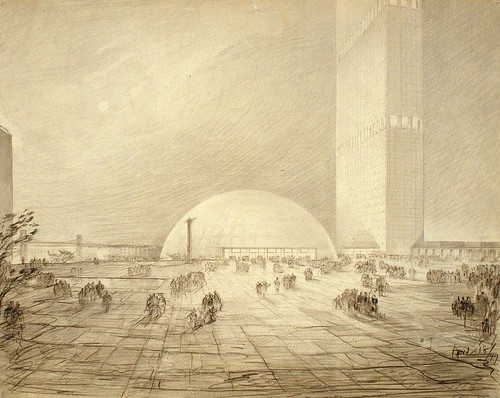
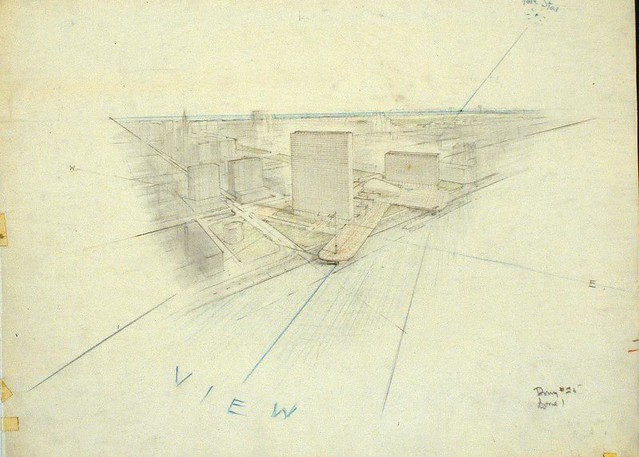
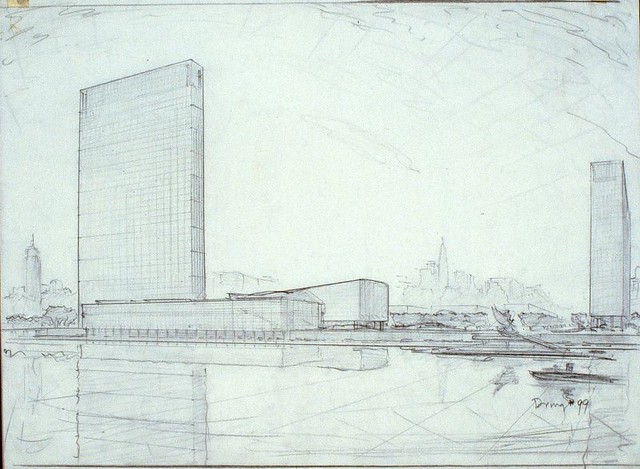



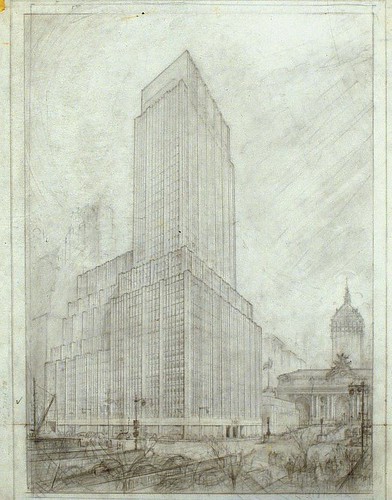


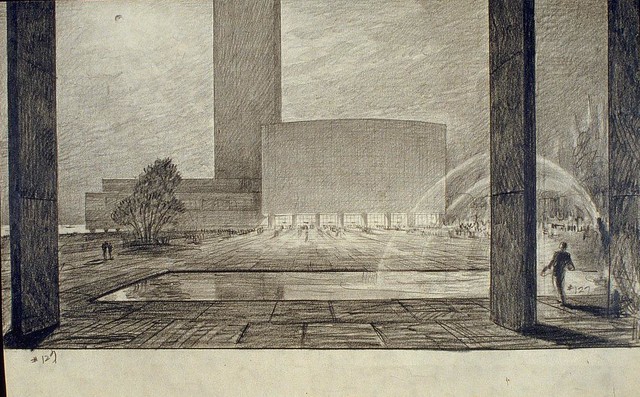
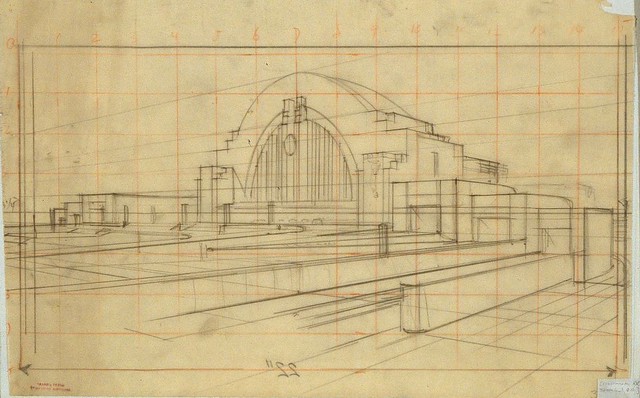
The Shadow of Today
So what does Ferriss’ vision mean for today? A lot, actually. 21st century cities are still debating density, high-rise buildings and the relationship between people and space. The skyscraper forests of megacities are not far from Ferriss’ dreams. On the other hand, new concerns such as the climate crisis and sustainability are taking the debate on “cities of the future” to a new dimension.
Yet Ferriss’ legacy is a reminder that urban design is not only technical, but also imaginative. His drawings show that cities are not only places to live in, but also places to imagine.
Hugh Ferriss may not have built many buildings. But the mark he left on the cities of the future is more lasting than the skyscrapers of many architects. The Metropolis of Tomorrow continues to fascinate as one of the rare works that simultaneously embodies both the hopes and nightmares of the modern urban vision. Today, as we walk in the shadow of a skyscraper, perhaps without realizing it, we are walking through a landscape Ferriss imagined. ✪
![[Futuristika!]](https://futuristika.org/wp-content/uploads/2020/12/futuristika-logo.png)

